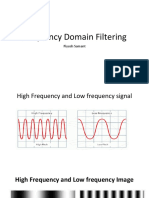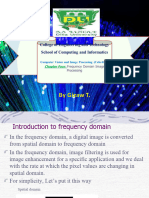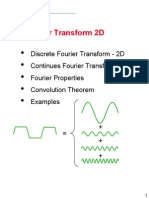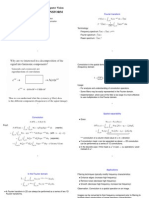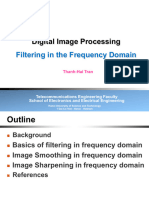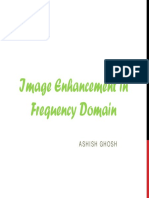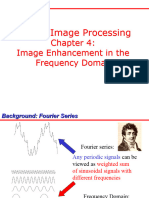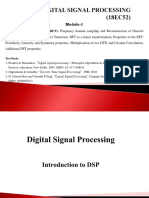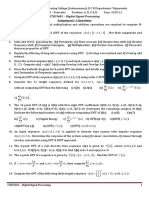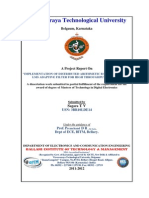0% found this document useful (0 votes)
26 views79 pagesLec 6 Image Processing
The document outlines the fundamentals of Digital Image Processing (DIP), focusing on image enhancement techniques in the frequency domain. It covers concepts such as the Fourier Transform, Discrete Fourier Transform (DFT), and various filtering methods including low-pass and high-pass filters. The agenda includes detailed discussions on smoothing and sharpening filters, emphasizing their applications in image enhancement.
Uploaded by
dracola909Copyright
© © All Rights Reserved
We take content rights seriously. If you suspect this is your content, claim it here.
Available Formats
Download as PDF, TXT or read online on Scribd
0% found this document useful (0 votes)
26 views79 pagesLec 6 Image Processing
The document outlines the fundamentals of Digital Image Processing (DIP), focusing on image enhancement techniques in the frequency domain. It covers concepts such as the Fourier Transform, Discrete Fourier Transform (DFT), and various filtering methods including low-pass and high-pass filters. The agenda includes detailed discussions on smoothing and sharpening filters, emphasizing their applications in image enhancement.
Uploaded by
dracola909Copyright
© © All Rights Reserved
We take content rights seriously. If you suspect this is your content, claim it here.
Available Formats
Download as PDF, TXT or read online on Scribd
/ 79












